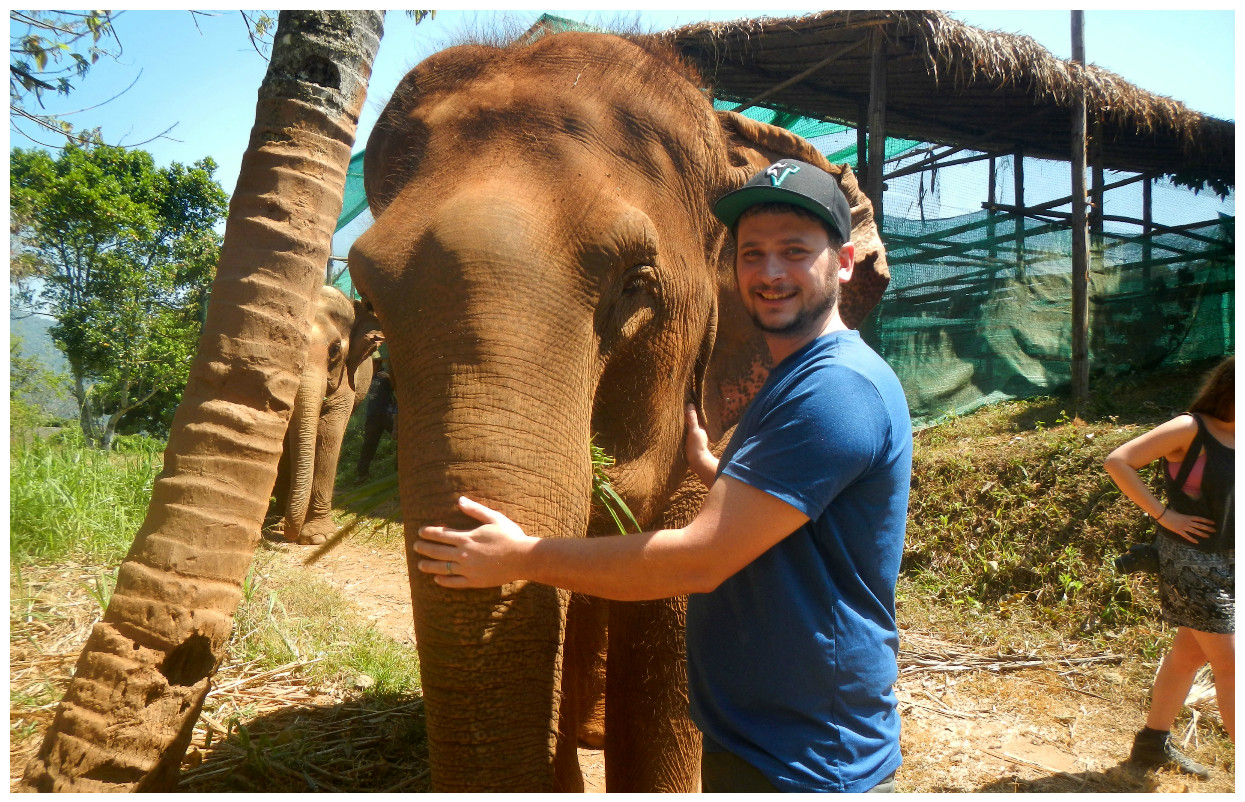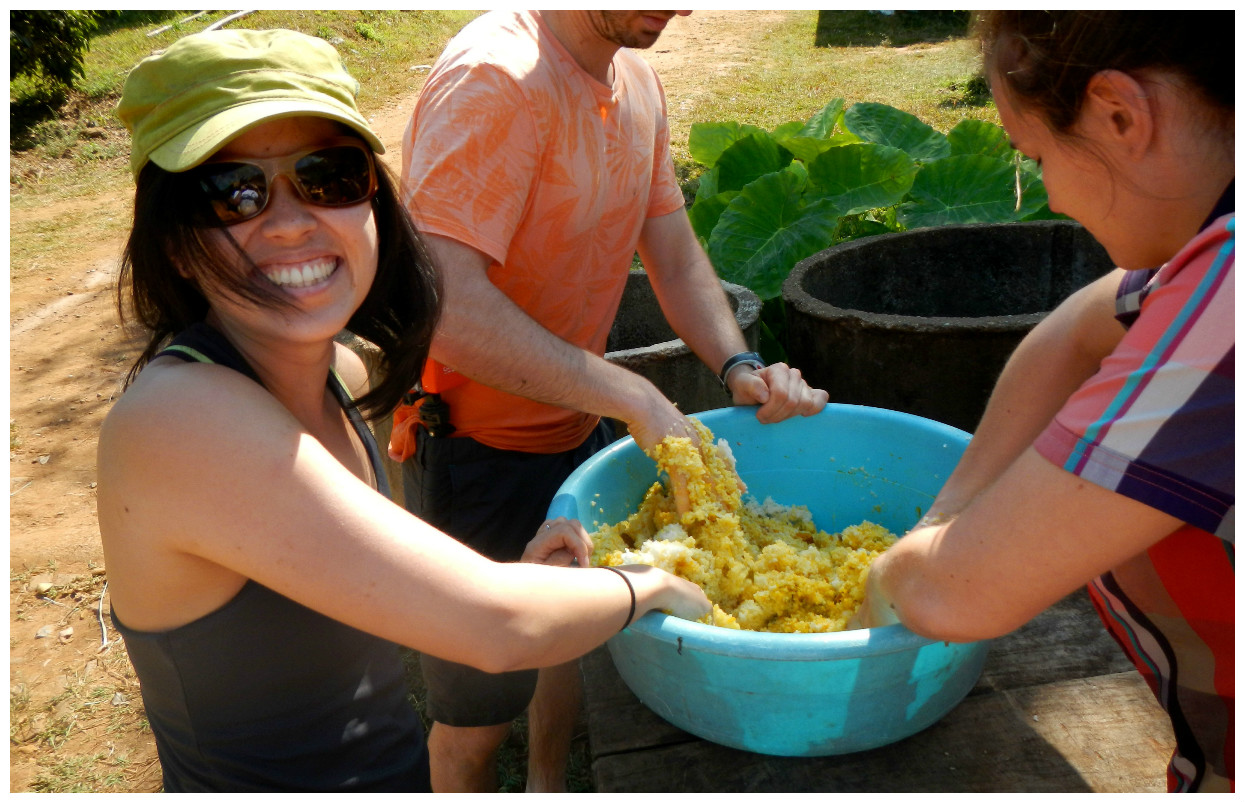Who doesn’t love elephants?
I can’t think of anyone.
Because of their popularity, there are tons of options for meeting and interacting with elephants in Thailand and around Southeast Asia. Sadly, many of them involve riding the elephants or making them perform tricks. Despite their size, an elephant’s spine is not meant to carry the weight of a human, let alone a chair + several humans. Taming an elephant so it will submit to these requests involves a cruel process that’s called “the crush.” I won’t go into this terrible torture, but will leave a link to a Nat Geo article here that sheds some light on the cruel training process and some of the discussion surrounding elephant treatment in Thailand. There are also plenty of photographs and video of the crush readily available online if you can stomach it. =(
There’s a lot of money to be made in the elephant riding/performance industry. But publicity about the brutal treatment of captive elephants has helped fuel the movement towards more humane elephant encounters and education on why you shouldn’t ride elephants.*
Elephant Nature Park in Chiang Mai is committed to the welfare and rescue of many of these working elephants. There can’t be a perfect solution to the ethical elephant interaction dilemma, but these caretakers and the Elephant Nature Park mission truly is to help elephants live a more comfortable life. We were lucky enough to book a spot for their Elephant Highlands 1-day adventure during our stay in Chiang Mai—they have limited availability and book up pretty far in advance.
We started with a lovely drive about an hour or so into the lush mountain area, through smaller villages and farms. Our first encounter involved snack time! We washed and chopped pumpkins and watermelons to feed them.
Then we walked with them with cucumbers as treats. We got to watch them eat leaves, vines, grasses, and literally, entire banana trees. To be fair, these banana trees are not the ones we might be used to seeing at banana farms and are smaller.

Even though their skin is covered in thick, wirey hairs, elephant skin is quite sensitive. They use dust/mud as sun and bug protection. They too, can suffer from mosquito bites. Surprisingly, they can’t sweat from their skin so sweat comes out in the areas around their toenails (cuticles?).
Asian elephants have more toenails than their African cousins. This helps them climb the often steep mountainside, which they are very good at. Asian elephants only have one “finger” on the end of their trunk (African elephants have two), meaning a tad less trunk dexterity; instead of grabbing small things with these “fingers,” they more often wrap the end of their trunk around them, even for things as small as a couple inches of cucumber.
Did you know the sound of a T-Rex in the movies is often actually an elephant sound? You can hear it in the video below, along with elephant growls and trumpeting.
We got to bathe them as they ate freshly harvested long grass, and then we made pumpkin, banana, sticky rice, and rice husk riceballs for another snack.

What an amazing day with these big, beautiful beasts!
*It’s a complex subject, and while we should all certainly feel for the elephant’s inhumane treatment, let’s not forget the humans either, who are often exploited labor. Here’s an article from The Atlantic that shares what the current-day state of mahoutship is like.


Wow this is a wonderful day and what a great experience
Love the pictures and the details you share with us
Yes, we loved it!
Appreciate the details, yes! Didn’t realize the harm to their spines in riding them.